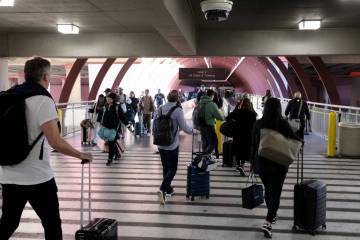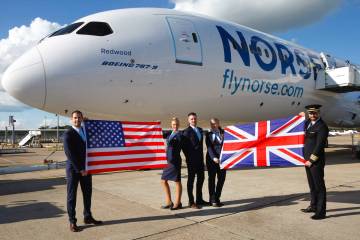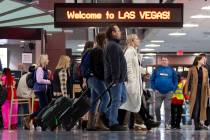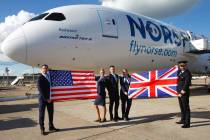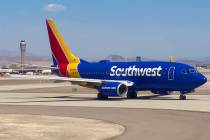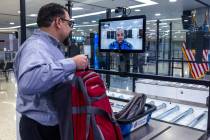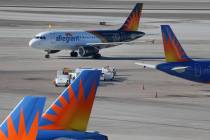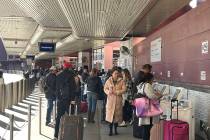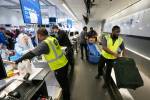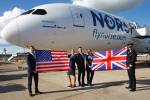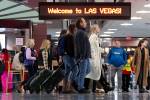20 biggest airport myths you shouldn’t believe
Close to 1 million flights transported over 895 million passengers into and out of U.S. airports in 2015, according to the U.S. Department of Transportation. Most travelers who pass through the nation’s airports harbor certain ideas about airports and flying — some of which are true, and some are false.
For example, it is true that air travel can be dehydrating; humidity levels in the cabin are usually less than 20 percent, whereas in the home they’re often higher than 30 percent, according to the World Health Organization. But it’s not true that airlines will cancel a flight if there are only one or two passengers. Click through to uncover the biggest airport rumors you shouldn’t believe.
Myth 1: Booking a Round-Trip Air Ticket Is Cheaper Than Two One-Way Airfares
Most people assume that a return ticket will be cheaper than two one-way tickets, but this is not always the case. “Travelers may be able to find a better deal and more convenient flight times by booking two one-way tickets, on the same airline or different,” said Kristina Portillo, founder of travel and wellness website BusinessTravelLife.com.
“The airlines often show the most expensive or most popular flight times first when booking a roundtrip, but booking one-way will unbundle the ticket price for each direction,” she said. “This is not always true, but it is worth taking the extra time to find out.”
Myth 2: Flight Delays Are Not Eligible for Compensation
Delays are typical airport mistakes for which compensation is a pipe dream — except for when you are eligible. Airlines that fly just in the U.S. are not required to provide compensation for flight delays, according to the U.S. Department of Transportation. However, airlines flying to and from Europe are subject to EU laws that do require passengers to be compensated for delays.
Over 11 million air passengers yearly are eligible for compensation in Europe alone, according to Eve Buechner, founder of airfare refund website Refund.me. Worldwide, an estimated $7 billion in potential compensation money for delays, cancellations, re-routings and missed flights remains unclaimed. Only 2 percent of air passengers file a claim, and 90 percent of air passengers are unaware they have the right to claim for flight delays, she said.
“Passengers are protected under EU law when flying on any flight from and to Europe, as long as the flight is operated by an EU-registered airline and code-share flights — for example, they booked American Airlines, but the flight is operated by British Airways,” Buechner added.
Myth 3: Airlines Will Cancel Flights With Only a Few Passengers
One of the biggest airport myths is that airlines cancel flights if there are only a few passengers. The assumption is that it’s not worth the cost to the airline to operate the flight. This is not actually the case, said travel agency owner and former airline employee Anthony Klang of Cruise Planners.
“What seems to be forgotten is that the aircraft is needed elsewhere,” said Klang. “As a 3-million-mile butt-in-seat flyer, I have been on jet flights with as few as eight people and one of two people on a commuter flight.”
Klang said that there is one instance where a flight might be canceled. “If an airplane is having a mechanical issue and there is an aircraft that is lightly booked, while the canceled flight is heavily booked — the airline may cancel the lighter booked flight since that means less people to re-accommodate,” he said.
Myth 4: You Can Only Bring One or Two Bottles of Wine Through Customs
Many people believe that there is a limit on the amount of alcohol that can be brought into the U.S. when arriving from another country: two to three bottles of wine, for example, or a bottle of scotch. In fact, this is only the duty-free limit, and there is no limit if the alcohol is for personal consumption. Duty, however, is expected to be paid per bottle over the duty-free limit of one liter, according to the U.S. Customs and Border Protection.
Paul Budny is managing partner of Lazenne, a European firm that sells travel accessories for wine lovers. “In theory, travelers are subject to duties that range from 35 cents to $2.00 per bottle. But in practice, no one gets charged this by border control because it’s too small of an amount for customs officers to do paperwork,” he said.
Myth 5: The Cost of Flights Goes Up Every Year
Travel industry revenues are expected to increase in 2016, but not because of an increase in flight prices. “In 2016, airfares are expected to be 2 to 3 percent lower than those of 2015 because of low oil prices and airline capacity growth,” said Tom Spagnola, senior vice president of supplier relations for travel booking website CheapOair.com. “The average airfare in 2016 is expected to be $580, compared to $623 in 2015.”
Revenue for online travel bookings in 2015 was $483 million, said Spagnola. Thanks to the convenience of technology, mobile apps and the accessibility of online brands, travel revenue will increase by about 8 to 10 percent in 2016. Time to plan those summer vacations.
Myth 6: Your Pets Will Enjoy Their Flight
You might think that flying your pet is not too much of a big deal; pets fly safely all the time in temperature-controlled cargo holds. In reality, the experience might be far from stress-free. Airlines do their best to keep your pet safe during a flight, but some things will be upsetting to most animals.
“One thing I cannot stress enough is how your pets are treated,” according to one airport fueler’s account in Thought Catalogue. “While your airline will take the best possible actions, some things cannot be avoided, like the noise on the ramp. I cannot stand out there without ear protection. Imagine your pet sitting out there waiting to be loaded onto the plane being exposed to the same amount of noise I am. Please, people, think twice before flying your pets.”
Myth 7: You’ll Get a Big Payout If You’re Bumped Off a Flight
Some passengers are quite happy to be bumped, anticipating hefty compensation for giving up their seat. But check the payout before you commit, because it might be less than you expect.
Voluntary bumping typically happens if a flight is overbooked and you volunteer to be bumped. Involuntary bumping happens without your approval. However, “Airlines won’t bump a first or business class passenger or ones who pay higher fares,” said Benét J. Wilson, an aviation and travel journalist, and co-editor of Airways News.
If the airline can’t get you to your destination within an hour of your original arrival time, you can get up to $650 for a U.S. destination with a short delay, and up to $1,300 for a long delay. The payouts are much less for voluntary bumping — around $200 in air vouchers in most cases, according to FinancialPost.com.
Myth 8: Dressing Up Might Score You an Upgrade to Business Class
Sadly, dressing the part will not get you an upgrade to business or first class. The more important factors are whether the flight is oversold, in which case there is more chance of an upgrade, and your status as a frequent flier, according to Business Insider.
For a ticket from Chicago to Tokyo for May 2016, an economy-class ticket was $992, a business-class seat was $2,814 and a first-class seat was $9,336, according to Business Insider. Airlines can’t afford to give away thousands of dollars in preferred seating no matter how expensive your suit.
“Dressing up does not mean you will score an upgrade into first/business class,” said Wilson. “Airlines have really tightened up on upgrades, and will reserve them for their best passengers.”
Myth 9: You Can Get an Upgrade at the Check-In or the Gate
If you’re considering wily ways to get an upgrade, such as arriving early for a flight or sobbing at the check-in desk — think again. Unless you have elite status or have paid a higher fare, upgrades are difficult to obtain.
Without frequent-flier status or an expensive ticket, you are unlikely to be upgraded, according to Wilson. However, she said, “If a flight is oversold and you volunteer to be bumped, you can negotiate for an upgrade as part of your compensation.”
Myth 10: Airlines Will Reimburse You for the Value of Your Lost Luggage
There are 2 million baggage complaints submitted every year, according to Nationwide insurance company. Most bags can be tracked and found, and most airlines will have your bags delivered wherever you are staying. Airlines will reimburse you, but only for “some” of the value of your lost luggage.
However, airlines typically will not be responsible for valuables, such as jewelry or money, according to IndependentTraveler.com. Such items should either be left at home or packed in your carry-on.
“Just because an airline loses your luggage, it doesn’t mean they will pay for what you lost,” said Wilson. “On domestic flights, the limit is $2,500, and for international flights, it’s up to only $640 per bag.”
Myth 11: Some Airports Are Dangerous for Landings
Some airports have a reputation for being dangerous during landings. Chicago Midway International Airport, New York’s LaGuardia Airport and San Diego International Airport are among the scariest airports for landing, according to AirfareWatchdog.com.
However, there are no “dangerous airports,” according to Patrick Smith, a pilot and New York Times bestselling author. “An airport might be challenging for pilots depending on the length of the runway or the surrounding terrain,” he said. “Mountains can complicate arrival and departure patterns because of the nearby peaks, and airports such as LaGuardia in New York are known for their short runways.”
Myth 12: Your Bags Will Be Checked Through to Your Destination
Your bags are typically checked to your destination for flights within the U.S. But this is not the case if you are flying internationally and change planes in the U.S. Travelers arriving from foreign destinations must clear customs and, if they have another flight, collect and re-check their bags. This is not the case in other parts of the world.
“It’s a shame that American airports cannot, for whatever reasons, recognize the ‘in transit’ concept,” said Smith. “It’s an enormous hassle, unheard of in most of the world. And it costs our airlines millions of annual customers.”
Myth 13: WiFi Access Is a Piece of Cake
With so many business travelers waiting for planes, you’d think that airports would provide good WiFi access. Well, don’t plan on it, unless you are lucky enough to take advantage of the club lounge free WiFi and pre-boarding cocktails.
Although some airports provide free WiFi, such as Las Vegas, Seattle and Boston, IndependentTraveler stated that “free of charge: doesn’t mean “free and easy.” The service can be unreliable, and there might be a limit to the length of time you can use the service before having to pay.
For pay-per-use WiFi, you might be charged $8 to $10 a day, and hourly rates are not often an option, according to IndependentTraveler. “Many terminals do have WiFi access, but it’s often expensive and cumbersome — few things in life are more irritating than those credit card payment pages,” said Smith. “It should be everywhere, and it should be free.”
Myth 14: The Radiation From Security Body Scanners Is Dangerous
People who travel frequently might be wary of airport security scanners because they give off radiation. However, security scanners at airports deliver very small amounts of radiation, only 0.00002 milli Sieverts (mSv), according to Imperial College, London. Compare that to a regular CT scan for health purposes, which gives off around 10 mSv.
To put this in perspective, drinking three glasses of water a day for a year would expose an individual to around 0.00045 mSv, almost five times more than a scan at the airport, according to CBS News. People are exposed to radiation every day.
Myth 15: Body Scans Are Invasive, and TSA Pat-Downs Are Required
The myth that everybody must receive a TSA pat-down is debunked by the U.S. Senate. The Senate stated that only passengers who set off the metal detector or the full-body scanner are subject to a pat-down.
The Senate said that security is “designed to be thorough.” The pat-downs are done by a same-gender officer, and a traveler can request that it be done in private with a travel companion if they so desire. Additionally, the X-ray machines that were introduced in 2008, and criticized for their invasive and revealing images, were removed from all airports in 2013, according to USA Today.
Myth 16: Ventilation Systems Harbor Cold and Flu Viruses
A common myth is that air ventilation systems on planes harbor germs and viruses. The air on planes is recycled, and the thought of breathing in the air of others who are coughing and sneezing might be disconcerting.
However, cabin air filters capture up to 99.9 percent of bacteria and viruses, according to Business Insider. Travelers should actually be more concerned about eating surfaces in airports and planes.
Tray tables harbor around 2,155 colony forming units (CFUs) of bacteria, the highest amount of bacteria found by a study on plane and airport cleanliness, according to a study by travel website TravelMath. Compare this to the average household toilet, which has around 172 CFUs. Experts suggest not eating anything that has touched the tray table directly, washing your hands often and using hand sanitizer, according to MSN.
Myth 17: Summer Travel Is Subject to Fewer Delays
Snow storms cannot cancel and delay flights in the summer. However, there are more flight cancellations in the summer because of weather at this time of year, according to expert resource site BottomLineInc. Thunderstorms and tropical storms are more common, and disrupt airline schedules just as much as winter storms. Additionally, airlines do not have to compensate travelers for delayed or canceled flights as a result of bad weather.
Most weather delays occur in May, June and July, and about one in six people can expect to be delayed, according to ABC News. The good news is that pilots can avoid thunderstorms, sometimes flying hundreds of miles to avoid them, and buffers are added to flight times to allow for circumnavigation, just in case.
Myth 18: Budget Travel Means Sacrificing Quality
Many people assume that if you buy a budget holiday package or a discounted air ticket, you are buying something of poorer quality. This is not the case. Companies offer discounted flights and holiday packages when demand is low to try to increase their revenues during off-seasons. In fact, a discounted ticket or holiday could be superior to a higher-priced alternative.
“Budgeting often means making trade-offs between various factors, like price and quality,” said Benjamin Glaser, features editor of DealNews. “But budget travel could even be more enjoyable in some instances: Visiting destinations during off-peak seasons means fewer crowds, better accommodations and maybe more interactions with locals.”
Myth 19: Traveler’s Checks Are a Must for Foreign Travel
Traveler’s checks were popular for travel abroad before ATMs were so prolific, and you can get your money back if you lose them. But they are also inconvenient. Typically, they can only be exchanged at a bank or a currency exchange at the airport, which is a pain if find yourself in the middle of the British countryside. An ID is required when cashing the checks, and carrying your passport or driver’s license is an added risk.
“Your bank probably has domestic and international partners that allow you to use their ATMs for low or no fees,” said Glaser. “Stick to these bank ATMs and take out just enough cash as you need. Keep an eye on your statement. If any fraudulent activity appears, report it immediately. You are not responsible for any fraudulent charges.”
Myth 20: You Have to Obtain a Visa on Arrival
A visitor’s visa for foreign travel can mean in-person application at the nearest embassy and interminable waiting. However, top destinations in the world now welcome travelers with eVisas — such as Australia, Cambodia, India, Kenya, Sri Lanka and Turkey. EVisas save time at airport arrivals; you simply use a different line at the airport immigration area.
Customs and immigration halls can be congested. “This is especially true for India and Turkey,” said Ivan Botero, online travel specialist for iVisa.com. “We heard from a work colleague who arrived in India with an eVisa, but a few people from the group opted for a visa on arrival. Those with an eVisa cleared customs in less than 30 minutes, but the others waited for over two hours, and those on the bus had to wait for a few people who did not have their visas ready before arrival.”
From GoBankingRates.com: Biggest airport myths you shouldn’t believe
RELATED
Stock up on Memorial Day deals at Costco
Are banks open on Memorial Day 2016?




